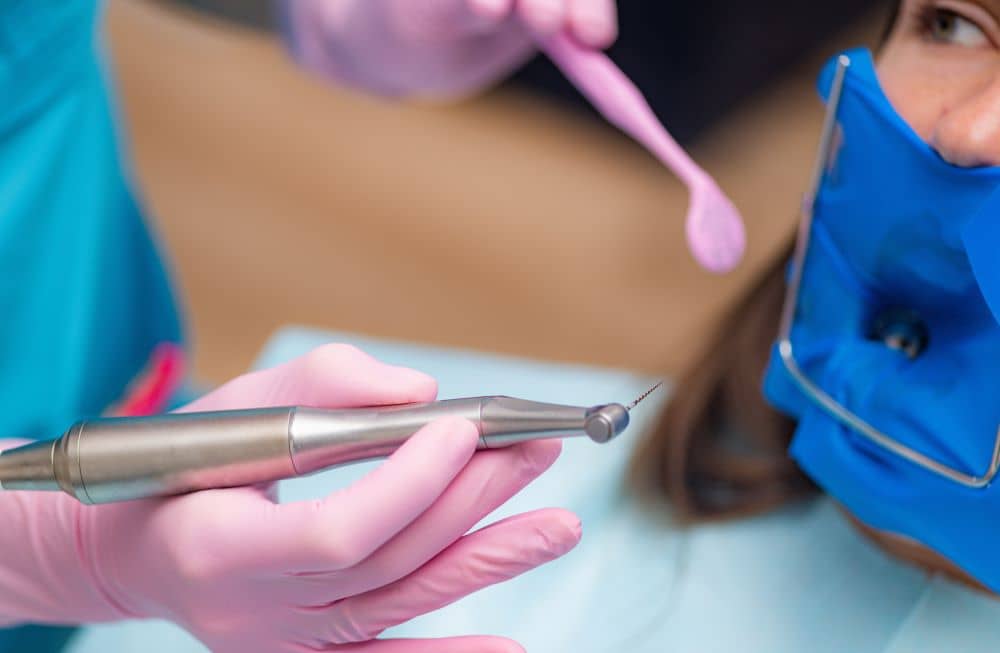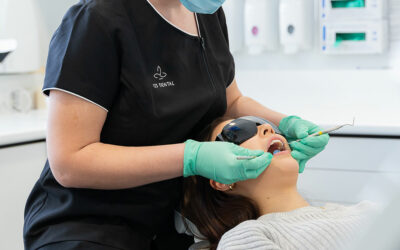Most people hear the words “root canal treatments” and shudder with fear.
While we understand the apprehension behind this treatment, modern technology and advancements in techniques have helped make root canal treatments safer and more comfortable.
In this guide to root canal treatment, we’ll look at why root canal treatments are needed, how root canal treatments are performed, and post-treatment care for root canal procedures.
What Are the Different Parts of Teeth?
Understanding the different parts of your teeth is an important part of understanding root canal treatment.
The four components of teeth are:
- Enamel – Thick protective layer (one of the hardest substances in the body) that covers the part of the tooth we see
- Dentine – The second layer that works to protect the tooth’s inner pulp
- Dental Pulp – The inner part of the tooth, located within the roots of the tooth, packed with nerves and minerals
- Cementum – The part of the tooth underneath the gums that helps anchor the tooth in place
When Is a Root Canal Needed?
If the tooth’s enamel is damaged by injury or decay, the interior of the tooth can become exposed. This leaves the pulp susceptible to inflammation or infection.
If the pulp inside a tooth becomes infected, it can get contaminated with bacteria and lead to pain and sensitivity. A root canal treatment is necessary to address the problem and prevent further complications such as tooth loss.
How Do I Know if I Need a Root Canal?
Typically, patients in need of a root canal suffer from:
- Soreness
- Aching
- Swelling in the gums
- Sensitivity
In some cases, patients may not be aware the tooth is infected, making it crucial to see your dentist for regular check-ups. Early detection is key.
What Happens if a Tooth Infection Is Left Untreated?
If a tooth infection isn’t addressed, root canal problems can lead to other complications, including abscesses and even the loss of the affected tooth.
What Happens During Root Canal Treatment?
The goal of root canal therapy is to get rid of the infection and save the affected tooth. Treatment typically involves several steps performed over one to two trips to your dentist, depending on the severity and complexity of the case.
A breakdown of root canal treatment:
- Local anaesthetic is used to numb the area.
- A small sheet of rubber is used to isolate the tooth to keep it dry and clean during the procedure.
- A small drill is used to access the affected area.
- Small files are used to extract the infected pulp/tissue.
- The area is thoroughly cleaned and disinfected.
- The area is thoroughly dried.
- A rubber-like substance (gutta percha) is used to fill the area to prevent further infection and seal the tooth.
- The tooth is restored to its former integrity and appearance by placing a filling or custom crown over the top.
A small supporting post may be needed inside the root chamber to ensure the restoration or crown is stable. Additional visits to your dentist may be needed to ensure the tooth is healing properly and all signs of infection are gone after a root canal treatment.
Is Getting a Root Canal Painful?
Root canal therapy is performed using local anaesthesia to prevent discomfort and pain during the treatment. Our team at 123 Dental strives to make any treatment we perform as comfortable as possible.
If you are especially nervous about root canal treatment, ask our team about sedation dentistry options.
Will I Feel Pain After Root Canal Treatment?
Once the local anaesthetic wears off, you may find the treated tooth feels sore or sensitive. The level of discomfort is often related to how severe the infection or pain was before treatment.
The post-treatment discomfort typically wears off within a few days. In the meantime, pain can be managed with prescription medication or over-the-counter pain meds.
Root Canal Post-Treatment Care
Taking good care of your gums and teeth and gums is essential following root canal treatment.
If your tooth is recovering from root canal treatment, you should:
- Avoid eating until the numbness in your mouth wears off after treatment.
- Avoid biting down or chewing hard foods with the treated tooth until it is protected with a crown or permanent filling.
- Maintain good oral hygiene by brushing and flossing daily to keep the area clean.
- Avoid excessively hot or cold liquids.
- Attend any follow-up appointments to ensure healing is taking place properly.
When to Call Your Dentist After Root Canal Treatment
If post-treatment pain remains for more than a few days after your root canal, it is important to contact your dentist immediately.
Other reasons to call your dentist after a root canal include:
- Your bite feels uneven
- Visible swelling outside or inside your mouth
- An allergic reaction to the medication
- Pre-treatment symptoms return
- The filling or temporary crown (if one was used) comes out
What Are the Alternatives to a Root Canal?
The alternative to a root canal is having the tooth extracted. However, this puts the patient at risk of additional complications and the need for possible further treatments to replace the missing tooth.
Do You Have Questions About Root Canal Treatment?
If you are experiencing tooth pain or any other oral health concerns, please reach out to our team of experts. We would be happy to answer any questions or arrange a consultation.
We are here to help ensure that you are as comfortable as possible during any dental treatment with us, including root canal treatment. If fear is stopping you from seeking help with tooth pain, please ask us about our sedation dentistry options or read our blog on tips for dealing with dental anxiety.









